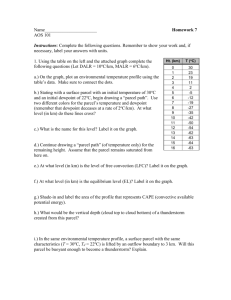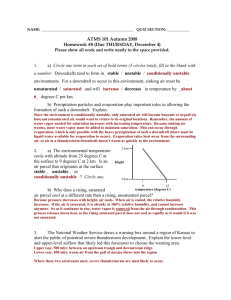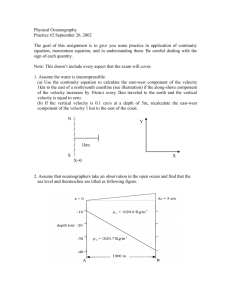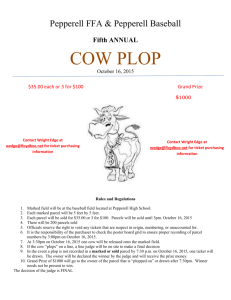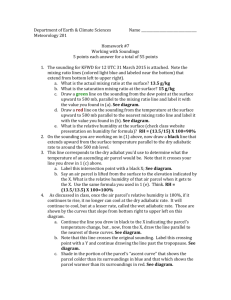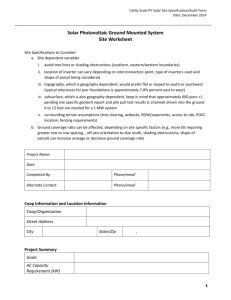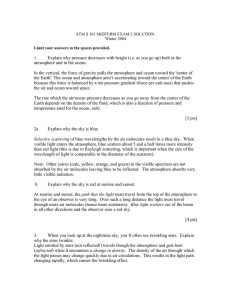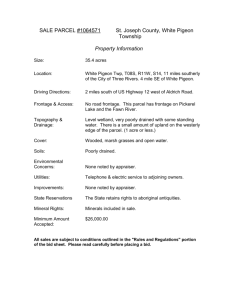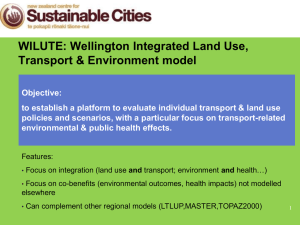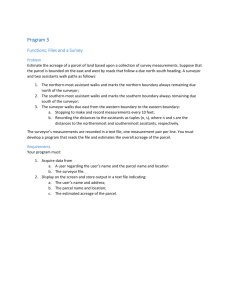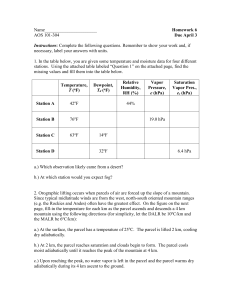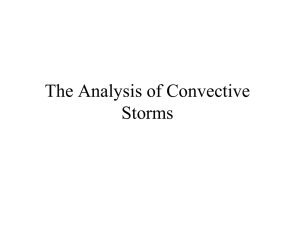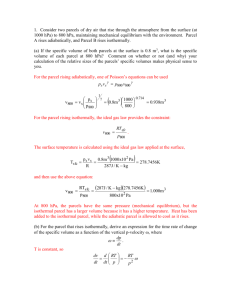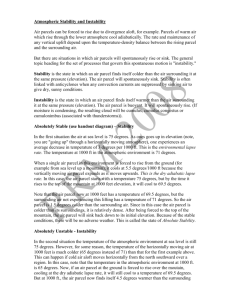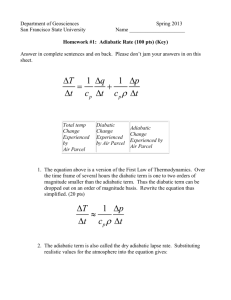Quiz 9 solutions and further explanations
advertisement
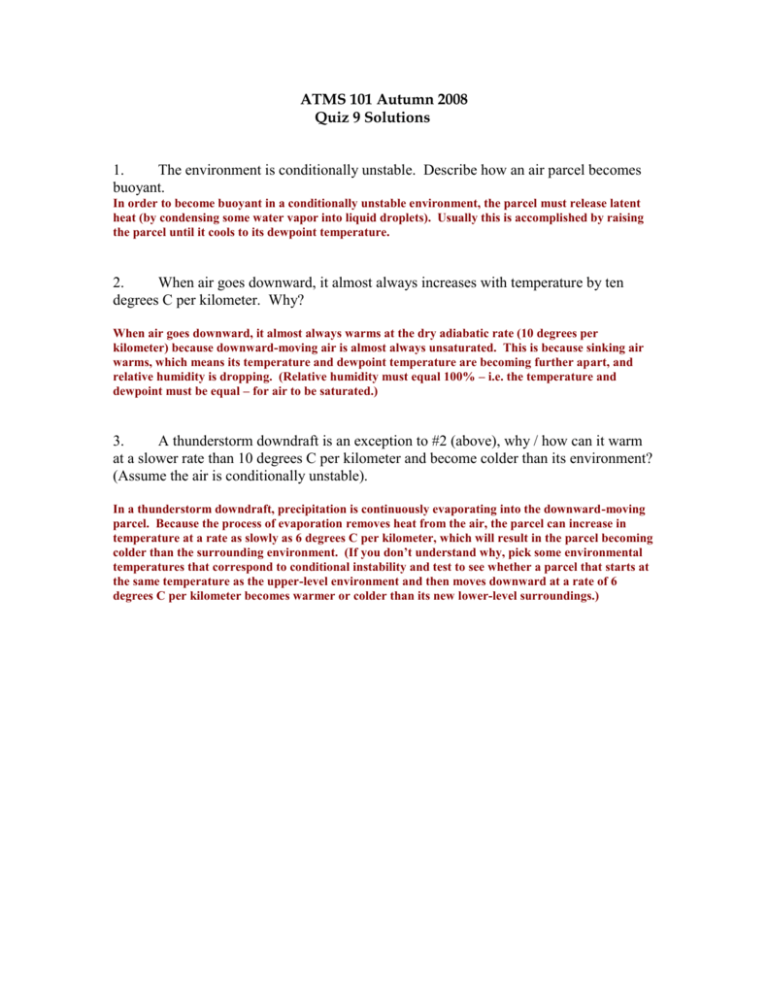
ATMS 101 Autumn 2008 Quiz 9 Solutions 1. The environment is conditionally unstable. Describe how an air parcel becomes buoyant. In order to become buoyant in a conditionally unstable environment, the parcel must release latent heat (by condensing some water vapor into liquid droplets). Usually this is accomplished by raising the parcel until it cools to its dewpoint temperature. 2. When air goes downward, it almost always increases with temperature by ten degrees C per kilometer. Why? When air goes downward, it almost always warms at the dry adiabatic rate (10 degrees per kilometer) because downward-moving air is almost always unsaturated. This is because sinking air warms, which means its temperature and dewpoint temperature are becoming further apart, and relative humidity is dropping. (Relative humidity must equal 100% – i.e. the temperature and dewpoint must be equal – for air to be saturated.) 3. A thunderstorm downdraft is an exception to #2 (above), why / how can it warm at a slower rate than 10 degrees C per kilometer and become colder than its environment? (Assume the air is conditionally unstable). In a thunderstorm downdraft, precipitation is continuously evaporating into the downward-moving parcel. Because the process of evaporation removes heat from the air, the parcel can increase in temperature at a rate as slowly as 6 degrees C per kilometer, which will result in the parcel becoming colder than the surrounding environment. (If you don’t understand why, pick some environmental temperatures that correspond to conditional instability and test to see whether a parcel that starts at the same temperature as the upper-level environment and then moves downward at a rate of 6 degrees C per kilometer becomes warmer or colder than its new lower-level surroundings.)

